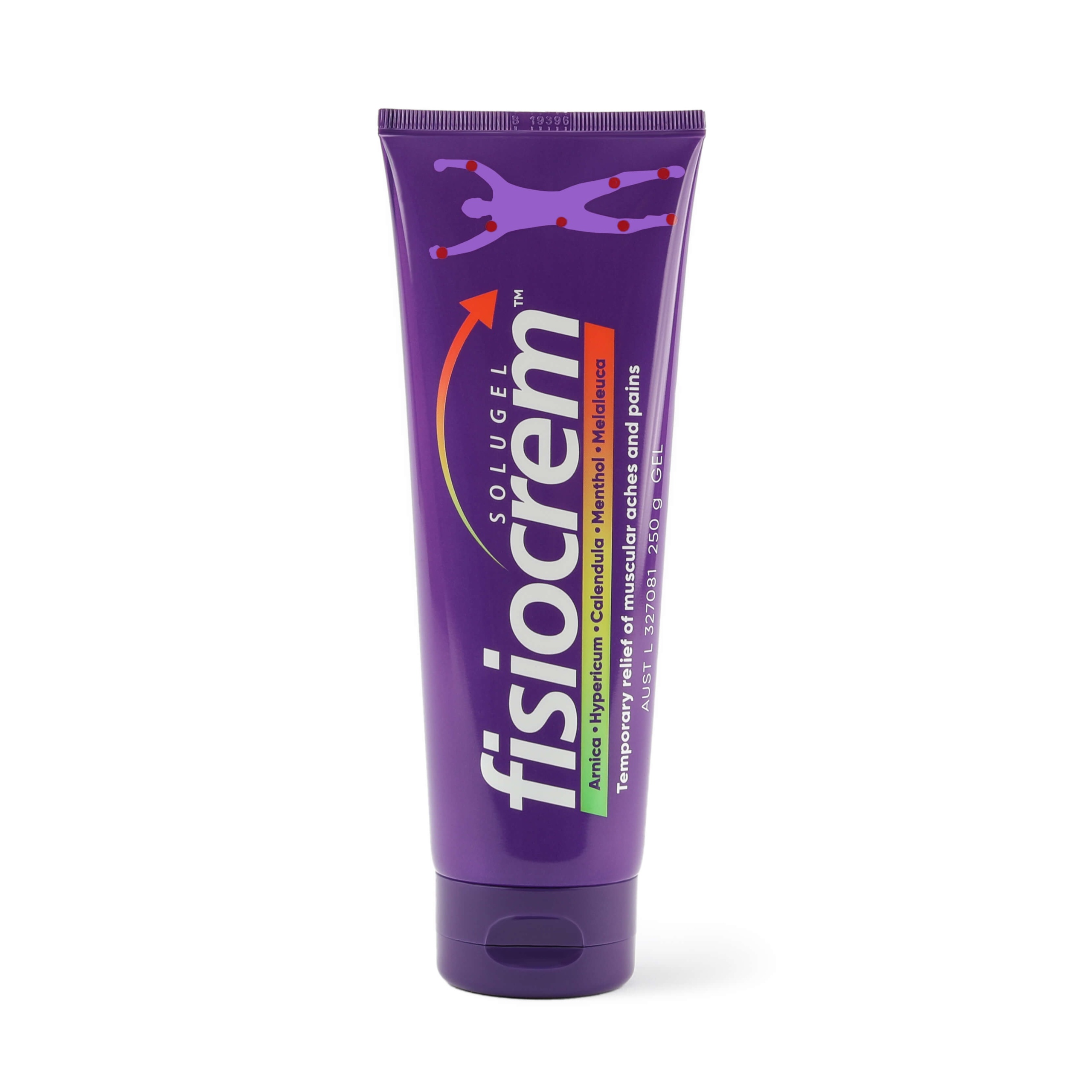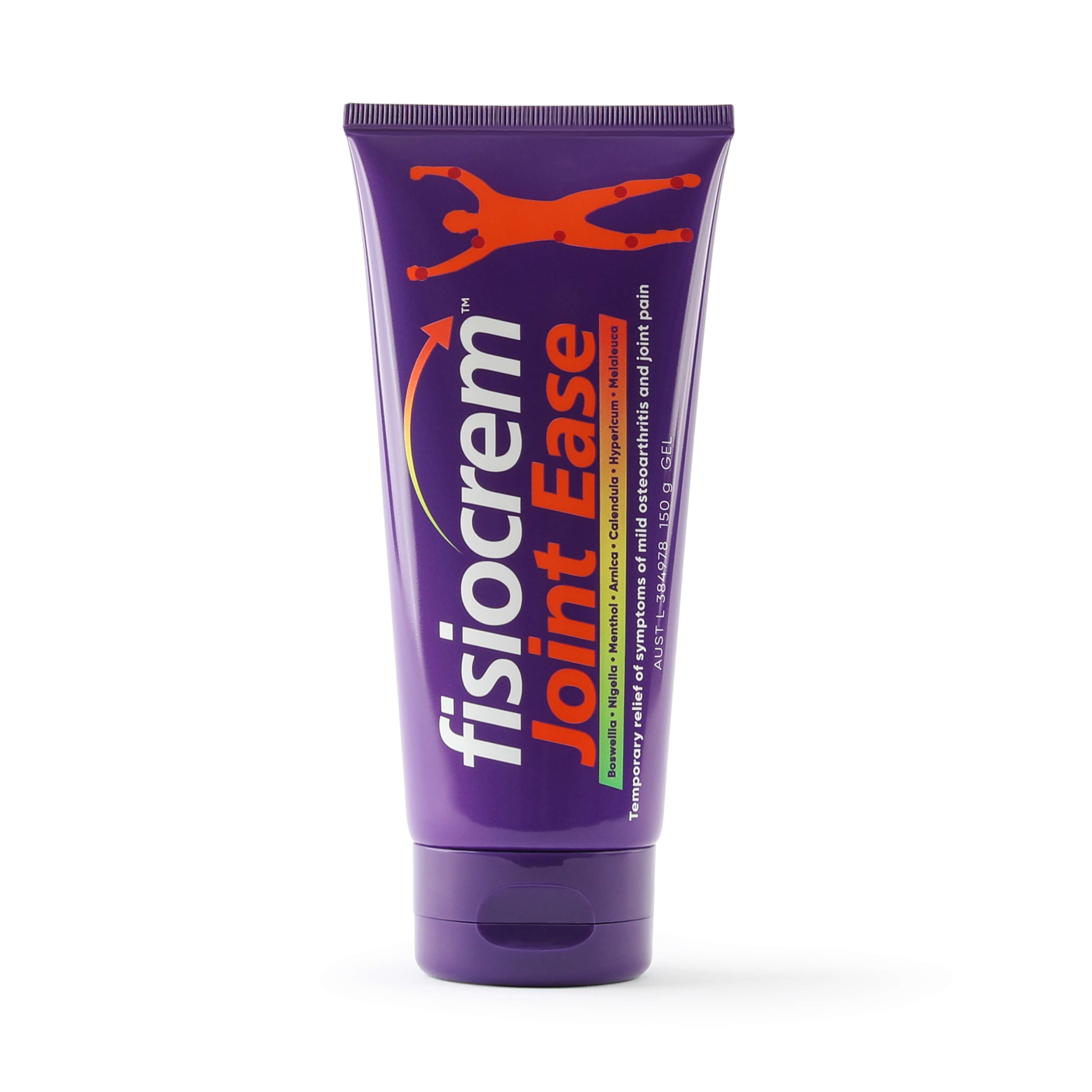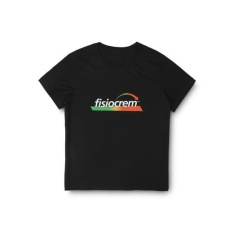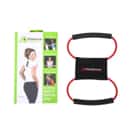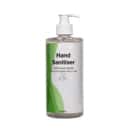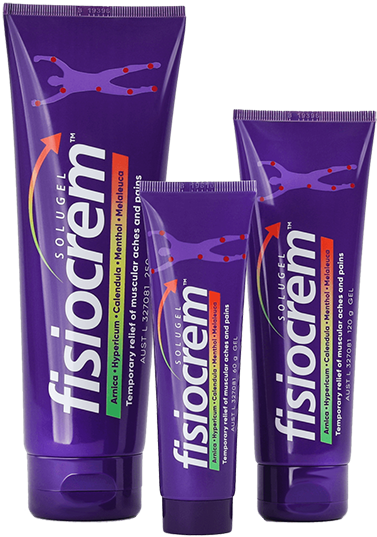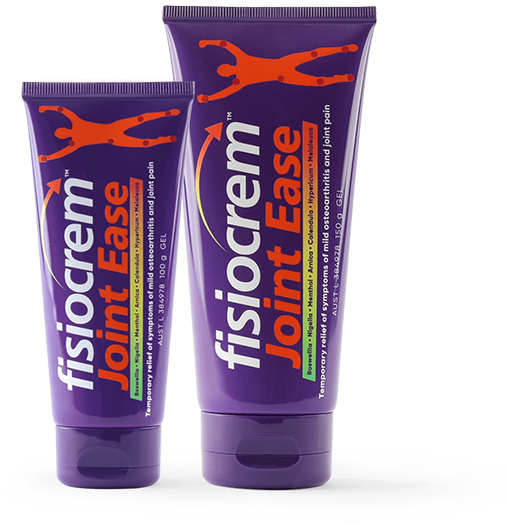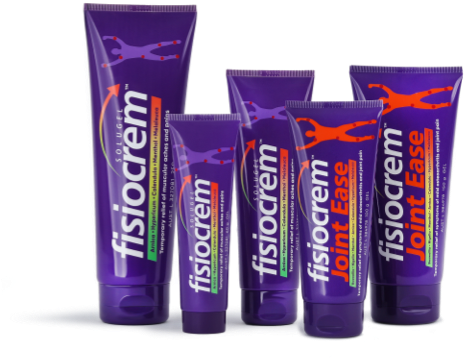Introducing fisiocrem sponsored athletes Riley and Ryan, a competitive brother duo who excel in dominating their age group in triathlon events.
Riley and Ryan are currently competing in triathlon events with a specific focus on long-course races. Their competitions range from the Standard distance (1.5km swim, 40km bike, 10km run) to the full Ironman distance (3.9km swim, 180km bike, 42.2km run) and everything in between.
Riley and Ryan’s favourite running spots are always by the water. Living on the Gold Coast, they have beaches right at their doorstep. They enjoy running the paths and trails at Main Beach, The Spit, and through Macintosh Island and Surfers Paradise. With wide open paths and breathtaking sunrises, no two runs are ever the same.
Ryan says, “Have confidence and belief in yourself and set goals to keep yourself accountable.”
Riley and Ryan Billingham’s greatest achievements in their sporting journey include completing their first Ironman at Port Macquarie and securing podium finishes at the 2024 World Multisport Championships. They placed 1st and 2nd in the standard distance duathlon and 2nd and 3rd in the long-course triathlon.
Riley and Ryan’s most memorable running experience was completing their first 32km session while training for Ironman Australia. This run included 6 x 3km intervals at race pace with minimal rest. It was a significant milestone for them, as it marked the furthest distance they had ever run and provided a crucial confidence boost, reassuring them that their training program was on track.
Riley and Ryan’s biggest supporters are, “Mum and Dad, who have spent countless hours travelling around Australia following us as juniors, and even more so now with events scattered across the country, along with the supportive network of the athletes at Team T-Rex Triathlon Club.”
For Riley and Ryan, getting into the right physical and mental zone is essential for race preparation. The most critical parts of their training are the key sessions, where they push themselves to train at race pace. These sessions provide valuable insights and shape their race-day approach. They emphasise consistency in training, ensuring they cover the full race distance while maintaining confidence and belief in their abilities. Ryan says, “You have to motivate each other and pick each other up when the going gets tough.”
Ryan says, “You have to motivate each other and pick each other up when the going gets tough.”
RILEY AND RYAN’S TOP RECOVERY TIPS
“Listen to your body pre-session and post-session. It will tell you exactly what you need to know. You’re better off having an easier day instead of pushing through and risking injury.”
Riley and Ryan Billingham
When it comes to injuries, understanding the distinction between a sprain vs strain is crucial for proper treatment and recovery. Sprains and strains are terms often used interchangeably, but they refer to different conditions that require specific care. Knowing what sets them apart can help prevent further damage and ensure a smoother recovery process.
What is a Sprain?
Ankle sprains are among the most frequent types of musculoskeletal injuries (Rogier et al. 2008). Sprains occur when the ligaments – tissues that connect bones and stabilize joints – are overstretched or torn (Fong, et al. 2009)(Canares & Lockhart, 2013). Sprains commonly occur in areas such as the ankle, wrist, or knee.
For example, an ankle sprain can occur when the foot twists awkwardly, overstretching the ligaments around the joint. These injuries can range from mild (a slight overstretching) to severe (a complete tear).
What is the Difference Between a Sprain vs Strain?
While both involve overstretching, a strain affects muscles or tendons—the tissues that attach muscles to bones. Strains often happen in the lower back and hamstring. Strains usually occur because of overuse or sudden force.
Muscle strains are common injuries and usually occur during strenuous activity. Muscle strain symptoms include acute pain and swelling. Physical therapy can also be implemented into your recovery routine to restore flexibility and strength. Avoiding excessive fatigue and performing adequate warm-ups before exercise can help prevent muscle strain injury (Noonan & Garrett, 1999).
Think of a muscle pull during a workout or a strained gluteal muscle from lifting something heavy. Understanding the difference between a muscle strain vs. a sprain is essential for providing proper first aid.
First Aid for Sprains vs Strains
Immediate first aid can make a significant difference in recovery from a sprain or strain (Borra et al, n.d). The R.I.C.E. method (Rest, Ice, Compression, Elevation) is widely recommended:
- Rest: Avoid using the injured area for a few days to prevent further damage.
- Ice: Apply a cold pack to the area for 20 minutes every 1-2 hours during the first 48 hours. This helps reduce swelling and provides pain relief.
- Compression: Use a bandage to help reduce swelling, but make sure it’s not too tight.
- Elevation: Raise the injured limb above heart level. This helps blood drain from the injury and reduces swelling (Iafstore, 2016).
fisiocrem Solugel - Topical Anti-inflammatory
Additionally, using a topical pain relief gel like fisiocrem Solugel can support the recovery process. fisiocrem Solugel is a topical anti-inflammatory cream that helps relieve symptoms of muscle sprains and strains. fisiocrem Solugel contains naturally derived active ingredients & menthol.
Using fisiocrem Solugel in your recovery routine can help speed up your recovery. It is also useful for treating acute injuries. This can help you get back to your activities more quickly.
fisiocrem Solugel is also ideal for:
- Relieving symptoms of soft tissue trauma
- Assisting in the healing of minor body tissue injuries
- Supports body tissue repair and regeneration
- Relieve symptoms of soft tissue trauma
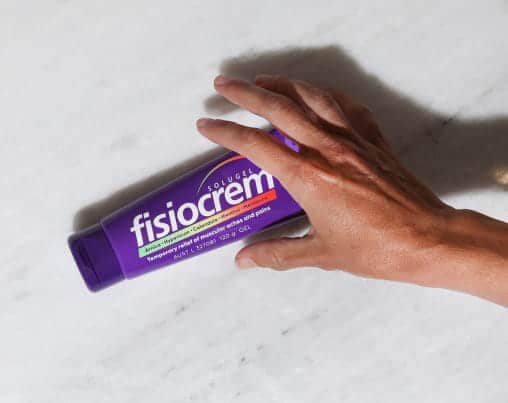
Swelling in Sprains and Strains
Swelling is a common symptom for both sprains and strains, as it indicates tissue damage and inflammation. For sprained ankle treatments, using cold packs can help control swelling in the first 48 hours. Combining this with fisiocrem Solugel can further support pain relief and reduce inflammation, making the recovery process smoother.
Moving Forward with Care
Knowing how to distinguish between a sprain and strain, and how to treat them, can be a game-changer in your recovery. Whether you’re dealing with a sprained ankle or a hamstring sprain, applying the right first aid measures, using fisiocrem Solugel, and gradually reintroducing movement can help you get back on track safely. If symptoms persist or worsen, it’s always best to consult with a healthcare professional for further guidance.
FAQs: Common Questions About Sprains and Strains
Cold is the preferred choice in the first 48 hours following a sprain to reduce swelling. You can introduce heat later to soothe and relax tight muscles.
Cold packs reduce blood flow to the injured area, which helps decrease swelling and numbs the area to reduce pain. This makes them an effective initial treatment for a sprained wrist or ankle.
Yes, heat should be avoided initially, as it can increase swelling. After 48 hours, heat can be beneficial in loosening up tight muscles during recovery.
In conjunction with the R.I.C.E. method. fisiocrem Solugel can help soothe sore muscles and reduce swelling, making it a helpful addition to your recovery plan. Over-the-counter pain relievers can also help manage pain.
Resting the muscle is crucial, followed by gradually re-introducing exercises to regain mobility. For a lower back strain, for example, gentle stretching and strengthening exercises can aid recovery while preventing further injury.
Ice helps reduce swelling and numbs the sore area. This makes it a good remedy for sore muscles after exercise or injury.
Rest, applying cold packs, and avoiding activities that put a strain on the back are key. Using fisiocrem Solugel can help reduce muscle discomfort, making it easier to transition back to movement. After the initial pain and swelling subside, gentle stretching and exercises can help restore mobility.
References
- Rogier M., Anton G., Roos M.D., Pim A., Bart W., Sita M.A. (2008). What Is the Clinical Course of Acute Ankle Sprains? A Systematic Literature Review. The American Journal of medicine. 121 (1) 324-331.
- Fong, D. T., Chan, Y.-Y., Mok, K.-M., Yung, P. S., & Chan, K.-M. (2009). BMC Sports Science, Medicine and Rehabilitation, 1(1).
- Canares, T., Lockhart, G. (2013). Sprains. Pediatrics in review.
- Iafstore, S. (2016). Sprain or strain? How to recognise and treat them. Retrieved from https://blog.iafstore.com/en/sprain-or-strain-how-to-recognise-and-treat-them-a428
- Borra, V., De Buck, E., Vandekerckhove, P. (n.d.) RICE or ice: what does the evidence say? The evidence base for first aid treatment of sprains and strains. Retrieved from http://www.wordeenjijplus.be/storage/main/poster-20.pdf
- Noonan, T., Garrett, W. (1999). Muscle Strain Injury: Diagnosis and Treatment : JAAOS – Journal of the American Academy of Orthopaedic Surgeons. 7 (4) 262 – 269.
Introducing fisiocrem sponsored athlete Meg, a dedicated fitness enthusiast with a strong passion for running and gym workouts.
Meg is currently hooked on both running and hitting the gym. These two activities complement each other perfectly, keeping her energised and grounded.
Meg says, “Every run feels like an adventure, but the Brisbane Half Marathon truly stands out.” As she crossed the finish line, her watch revealed she had achieved a 5-minute personal best time! She considers that a solid win!
Meg says her biggest supporter is, “My mum, who’s at every race with me, triple-checking that I have everything I need and cheering me on.”
For Meg, race day preparation is both a mental and physical challenge. The night before, she switches off from social media to focus all her energy on the event. She ensures her meal includes a balance of protein, carbs, and fats, including her usual 8 to 12 hours of sleep. Physically, she’s refined her approach over time to avoid getting sick before the race. It’s a delicate balance to get right.
Meg is drawn to trails through rainforests and near waterfalls. Running in her hometown of Cairns holds a special place in her heart. The paved and unpaved paths that she explores in her backyard, fill her with gratitude. Meg says, “There’s a calming energy in nature that you can’t find anywhere else.”
MEG’S TOP RECOVERY TIPS
Meg’s top recovery tips are, “Fuel your body and rest as much as you can to avoid burnout. Remember, where your energy and focus go, results follow.”
Meg Taylor
Neck pain is a common issue. It can be because of poor posture at work, sleeping in an awkward position, or everyday strain.
It can range from mild discomfort to persistent aches that interfere with daily life. Learning how to relieve neck pain can make a significant improvement in how you feel throughout the day. This article will explore effective remedies. Including tips on posture, stretching, and the use of topical solutions like fisiocrem Solugel and fisiocrem Joint Ease.
Understanding Neck Pain
Neck pain can come from many causes. These include bad posture, sleeping in an awkward position, or sudden movements that strain the neck muscles.
Common symptoms include stiffness, soreness, and difficulty turning the head. Over time, untreated neck pain can lead to headaches, shoulder discomfort, or even back pain. Recognising the root causes of your pain can help you choose the right remedy.
How to Relieve Neck Pain
If you’re wondering how to relieve neck pain, there are several simple strategies you can try. Stretching, taking breaks, and adjusting your posture can all provide relief.
Gentle neck exercises can help relax tight muscles and boost blood flow. Try slowly turning your head from side to side. You can also gently roll your shoulders.
How to Ease Neck Pain from Sleeping Wrong
Waking up with neck pain is frustrating, and it’s often caused by sleeping in a position that doesn’t support the neck. If you’ve slept in an awkward position, start by gently stretching your neck. Tilt your head from side to side and slowly rotate your neck to release tension. Applying a warm compress can also help relax stiff muscles.
What Is the Best Pillow for Neck Pain?
Choosing the right pillow is crucial for neck pain relief. A good pillow supports the natural curve of your neck, preventing strain while you sleep. Experts often recommend memory foam pillows, and cervical pillows for people with neck pain.
These pillows keep your neck aligned with your spine, reducing the chances of waking up sore.
How to Relieve Neck Pain from Sleeping
If you’re dealing with frequent pain from sleeping, it may be time to adjust your sleeping position. Sleeping on your back with a supportive pillow is usually the best way to avoid pain, as it keeps your spine and neck aligned. If you prefer sleeping on your side, use a pillow that keeps your head level with your shoulders to prevent strain.
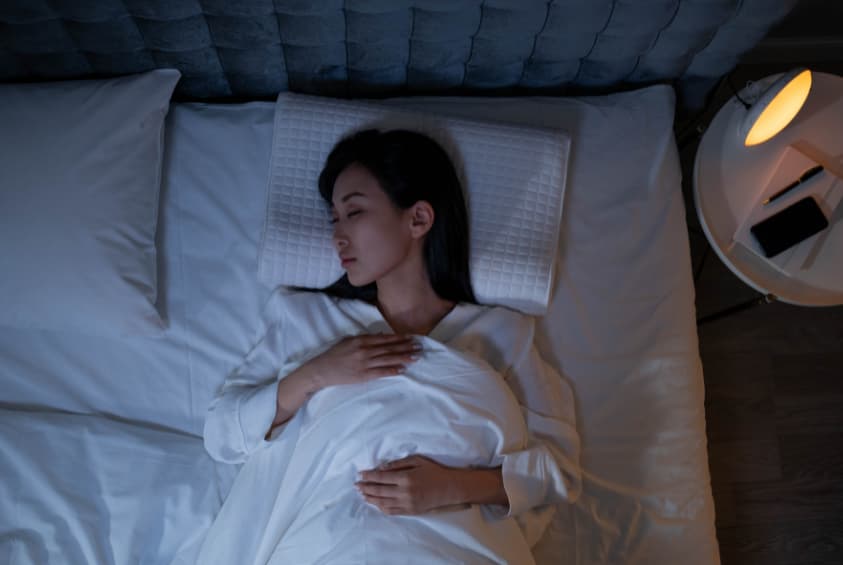
Topical Solutions for Relief
Topical gels and creams can be an effective way to target pain directly. Products like fisiocrem Solugel and fisiocrem Joint Ease offer effective relief by reducing inflammation and relieving pain. These products are easy to apply, making them a convenient option for managing pain throughout the day.
fisiocrem Solugel for Neck Pain
fisiocrem Solugel is a topical pain relief gel containing menthol and naturally derived active ingredients. fisiocrem Solugel relieves muscle pain and helps in the management of muscle sprains and strains. It contains active ingredients like Arnica and Hypericum, which have anti-inflammatory properties. Using this gel on your neck can help ease muscle aches and soreness.

fisiocrem Joint Ease for Neck Pain
fisiocrem Joint Ease is an ideal topical solution for mild neck stiffness and mild joint pain. This topical gel contains ingredients like Boswellia Serrata and Nigella Sativa, which work together to relieve soreness and support joint mobility. By applying fisiocrem Joint Ease to your neck, can ease mild stiffness and discomfort throughout the day.
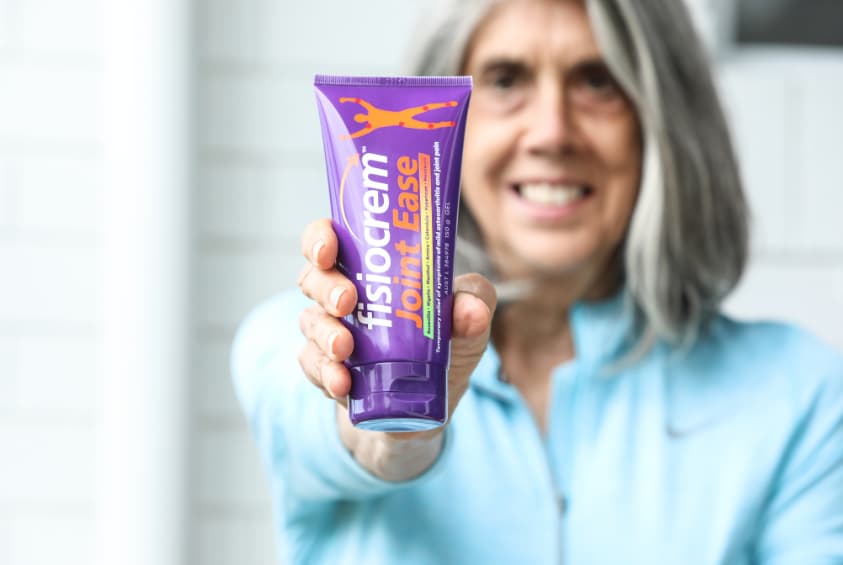
Simple Stretches
Stretching is an effective way to alleviate neck pain. Here are a few simple stretches you can do at your desk or at home:
- Side Neck Tilt: Gently tilt your head toward your shoulder and hold for 15-20 seconds. Repeat on the other side.
- Neck Rotations: Slowly turn your head to the right, hold, then turn it to the left. Repeat 5-10 times.
- Shoulder Rolls: Roll your shoulders forward in a circular motion, then reverse. This helps loosen the muscles connected to the neck.
How to Ease Neck Pain with Self-Massage
Self-massage can be an effective way to release tension in the neck. Using your fingers, gently massage the base of your skull and the sides of your neck in a circular motion. Applying fisiocrem Solugel or fisiocrem Joint Ease during the massage will help relieve pain and stiffness.
Long-Term Remedies
To prevent ongoing neck pain, consider strengthening your neck and shoulder muscles through regular exercise. Activities like yoga or swimming can improve flexibility and posture, reducing the likelihood of developing neck pain. Additionally, maintaining a healthy lifestyle with regular movement is key to long-term relief.
When to Seek Professional Treatment for Neck Pain
You can treat most cases of neck pain with home remedies. However, if the pain continues or gets worse, it is important to see a health professional. If you feel pain with numbness, tingling, or weakness in your arms, it may be a sign of a serious problem. You should seek professional help.
Conclusion
Neck pain can be a daily struggle. Using simple remedies can help provide relief. Stretching, adjusting your workplace ergonomics, and using topical treatments are effective. Try fisiocrem Solugel and fisiocrem Joint Ease for effective relief.
Frequently Asked Questions (FAQs)
The best way to relieve neck pain is through a combination of stretches, ergonomic adjustments, and topical treatments.
You can avoid neck pain by keeping good posture. Adjust your monitor so it is at eye level. Take regular breaks to stretch your neck.
Gentle neck tilts, rotations, and shoulder rolls are great exercises to relieve tension and improve neck flexibility.
Apply fisiocrem two to three times a day, or as needed, for effective relief from neck pain and stiffness.
Select a pillow that supports your neck. It should not be too high or too flat.
Introducing fisiocrem sponsored athlete Carmen, a dedicated mum pushing hard towards her goals and participating in multiple sporting activities.
Carmen’s favourite activities are running and functional training at her local F45. She has found a great balance in her fitness journey and is shifting her focus from triathlons to Hyrox. She says, “I’ve learned that missing training sessions is a normal part of life with young kids.”
Carmen’s most treasured run was the Two Oceans Half Marathon in Cape Town, South Africa. She was mesmerised by the natural scenery, especially as she watched the sunrise over the Table Mountains. However, Sydney holds a special place in her heart, as it is where she completed her very first marathon.
Carmen’s biggest fitness achievement is completing her first marathon in 2023, the Sydney Marathon (42.2 km). It was an incredible experience, especially considering the challenges she faced along the way. During her training, she had to balance her preparation with the demands of raising three kids under five and supporting her husband, who had just started a new company. They also bought a new house and moved mid-training block. Carmen focused significantly on mentally preparing for the infamous 35 km wall that everyone warned her about, and she was proud that her grit and mental strength helped her get through the marathon without feeling like she hit that wall. On race day, she encountered a setback, spending 40 minutes hobbling to a medical tent to strap her ankle, yet she still finished under her goal time, with an official time of 5:42:07, despite a heatwave. Additionally, Carmen raised over $1,000 for ‘At The Ark Inc’ her charity of choice, making the journey even more meaningful. The support from Daniel and their kids (Leo, Isla, and Cruz), her coach Zac, and her friend Kylie, who ran alongside her, played a crucial role in her success. It was a day filled with challenges, but crossing the finish line felt like the culmination of her hard work and dedication.
Carmen says her biggest supporters are, “My husband Daniel, my children and my coach Zac. They all inspire me and keep fueling my passion for running. Along with my friend Kylie who cheers me on each race.”
Preparing for a race involves both mental and physical strategies for Carmen. Physically, she follows a well-structured training plan tailored by her coach, which helps her build the necessary endurance and strength. Mentally, she spends a lot of time visualising the race and focusing on overcoming any negative self-talk that may arise, silencing that inner critic.
Carmen says, “I remind myself of the hard work I’ve put in and the support I have from my family and friends.”
CARMEN’S TOP RECOVERY TIPS
Carmen’s top recovery tips are, “Listen to your body! Ensure you have high-protein meals, enough sleep and time to relax during a busy race weekend.”
Carmen Exler
Mild arthritis affects millions of people around the world. It causes joint pain, stiffness, and discomfort. These symptoms can make daily activities difficult.
With National Arthritis Week in October, it’s the perfect time to discuss ways to manage and relieve mild arthritis symptoms. In this article, we will look at ways to reduce mild arthritis pain. We will focus on lifestyle changes and topical treatments, such as fisiocrem Joint Ease.
Understanding Mild Arthritis
Mild arthritis is often an early stage of joint-related discomfort where the symptoms are present but not severe. It can affect people of any age, though it’s more common as we get older.
The most common type of mild arthritis is mild osteoarthritis. This condition affects the joints and causes cartilage to break down. As a result, it leads to pain and inflammation.
Symptoms of mild arthritis include joint pain, tenderness, and stiffness. You may also notice a decrease in your range of motion. These symptoms can get worse over time if you do not treat them.
The Importance of Early Treatment for Mild Arthritis
Managing mild arthritis early can prevent the condition from worsening. Early intervention helps maintain joint function and mobility while minimising pain and inflammation. Without proper care, mild arthritis can progress to more severe forms, significantly impacting your quality of life. By addressing it early, you can lead an active and fulfilling life, even with mild arthritis.
Topical Treatments for Mild Arthritis Pain Relief
For mild arthritis relief, topical treatments like creams and gels are popular. They can provide effective pain relief.
fisiocrem Joint Ease is a topical anti-inflammatory cream formulated to address mild arthritis pain. This topical mild arthritis gel helps reduce inflammation, relieve pain, and promote healthy joint function.
How fisiocrem Joint Ease Works
fisiocrem Joint Ease combines menthol & naturally derived active ingredients with scientific innovation to provide effective relief from mild arthritis symptoms. The gel contains key ingredients like Arnica montana, Boswellia serrata, Nigella Sativa, Calendula, Menthol, Melaleuca, and Hypericum, which work together to reduce inflammation, soothe soreness, and support joint flexibility. Its effective formula allows for easy application without a greasy residue, making it a convenient option for daily use.
Menthol & Naturally Derived Active Ingredients in fisiocrem Joint Ease
- Arnica Montana: Known for its anti-inflammatory properties, Arnica Montana helps to reduce joint pain and swelling.
- Boswellia Serrata: This resin extract helps reduce pain and improve joint function.
- Calendula: Helps repair damaged tissue and supports body tissue regeneration.
- Hypericum:(St Johns Wort), Helps to relieve mild swelling & stiffness.
- Melaleuca: (Tea tree oil) Is an anti-inflammatory & enhances the dermal penetration of the active ingredients.
- Nigella Sativa: Helps to relieve mild joint aches, pains, and soreness.
- Menthol: Relieves pain and helps to stimulate blood flow to the skin.
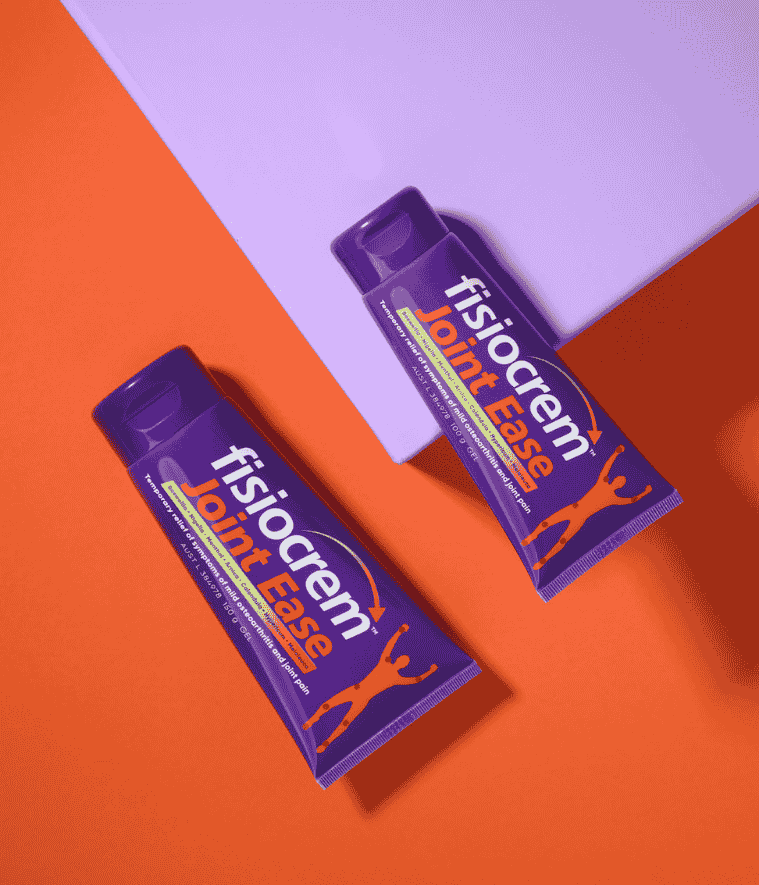
Additional Benefits of Using fisiocrem Joint Ease
In addition to pain relief, fisiocrem Joint Ease helps improve joint mobility and flexibility. This is important for staying active. Using fisiocrem Joint Ease regularly can help ease mild joint stiffness and soreness. This allows you to move more freely during the day.
Incorporating fisiocrem Joint Ease into Your Routine
To get the most out of fisiocrem Joint Ease, it’s essential to apply the product correctly. Use a small amount of the gel on the affected area and gently massage it into the skin until fully absorbed. Since the product provides temporary relief, consistency is key to managing ongoing mild arthritis symptoms.
Lifestyle Changes to Manage Mild Arthritis
In addition to topical remedies, lifestyle changes can play a significant role in managing mild arthritis symptoms. Staying active is crucial for keeping joints flexible and reducing stiffness. Low-impact exercises like swimming, cycling, and walking are ideal for individuals with mild arthritis.
Also, eating a healthy diet with anti-inflammatory foods can help reduce joint inflammation. Foods such as leafy greens, fatty fish, and nuts are ideal sources of anti-inflammatories.
The Role of Exercise in Mild Arthritis Relief
Exercise is a critical component of any management plan. Low-impact activities like yoga, swimming, and tai chi can help strengthen the muscles around your joints. These exercises improve mobility without putting too much strain on the affected areas. Regular physical activity keeps joints flexible and reduces stiffness, making it easier to go about your day.
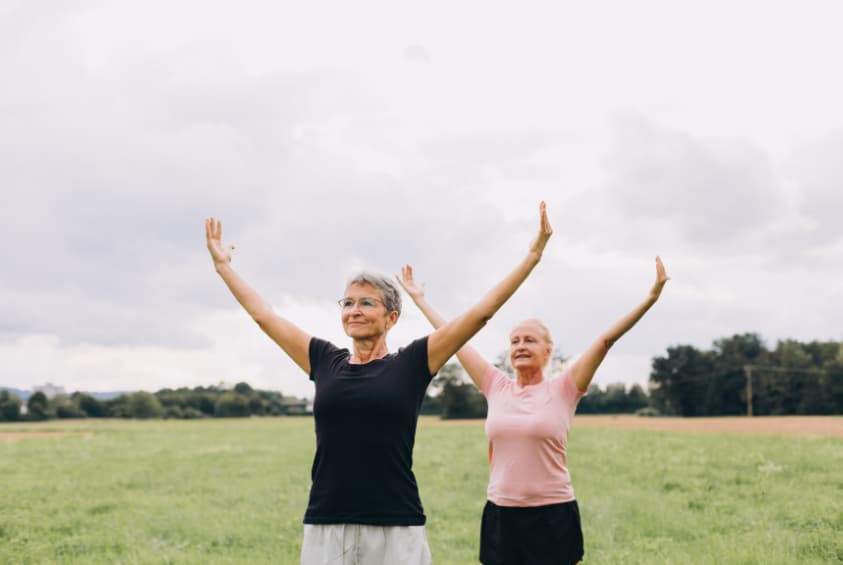
The Impact of Diet on Mild Arthritis
A balanced diet rich in anti-inflammatory foods can complement the use of fisiocrem Joint Ease and other treatments. Foods like salmon, olive oil, berries, and leafy greens help reduce inflammation. Incorporating more whole foods and fewer processed items can significantly impact your overall joint health.
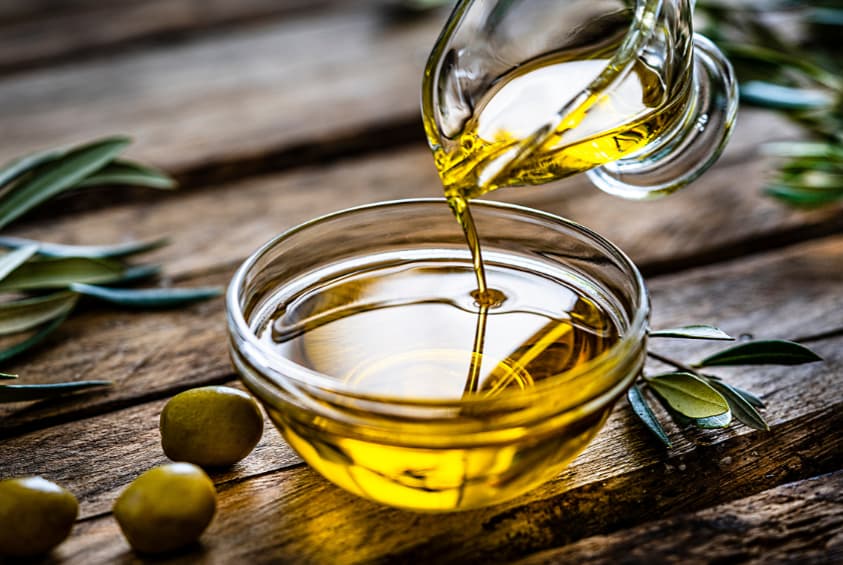
National Arthritis Week: Raising Awareness
National Arthritis Week takes place in October. October is a time to raise awareness about mild arthritis and its impact on daily life. It provides a platform for sharing resources, support networks, and the latest research on managing the condition.
By joining events this week, you can meet others with similar experiences. You can also discover new ways to manage your mild arthritis symptoms. Learn more about National Arthritis Week.
Conclusion
Managing mild arthritis doesn’t have to be overwhelming. Using topical treatments like fisiocrem Joint Ease, making lifestyle changes, and staying active can help reduce pain. These steps can also improve your quality of life. National Arthritis Week is a great time to take action, educate yourself, and find the support you need.
Introducing fisiocrem sponsored athlete Joel, an active runner and dedicated family man based on the Gold Coast.
In 2017, while living in Tasmania, Joel experienced atrial fibrillation and briefly flatlined in the hospital. This resulted in him being on beta blockers and aspirin for 12 to 18 months, which led to a significant decline in his physical activity. He struggled to even mow the lawn without feeling exhausted, contributing to considerable weight gain. In 2019, his family relocated to the Gold Coast, where doctors cleared him to resume an active lifestyle. Inspired by the fitness culture, Joel embarked on his running journey, well after believing he would never be active again.
Joel likes to inject some humour into his race day routine to ease his nerves. In addition to that, he ensures he has trained sufficiently to meet his goals and has a solid race day plan in place. He approaches goal setting with a “good, better, best” framework, allowing for unexpected circumstances that may arise during a race. “On race day I make sure I have planned for details like finding parking, doing my warm-up, and knowing how to reach my start zone. All of which help reduce my anxiety.”
Joel grew up running in Launceston, Tasmania, a city rich with stunning landscapes ideal for jogging. “I lived near an area that connected several picturesque spots, creating fantastic running loops.” Some of these spots included: Cataract Gorge, Duck Reach Power Station, and Trevallyn Dam. These locations provided a variety of trails, ranging from paved paths to rugged terrain, featuring steep hills and numerous stairs. After heavy rain or during water releases for power generation, the sight of the powerful white water rushing over the dam walls was truly breathtaking. “However, coastal sunrise runs on the Gold Coast were equally spectacular.”
Joel says, “My wife and children. They are my greatest motivators and supporters, inspiring me to set an example of a healthy and active lifestyle. Also for accepting the need for more running shoes even though I just bought a pair.”
His wife puts up with the alarm going off every 10 minutes until he finally wakes up for his morning runs. She also drives the kids around during his races. Joel’s son, who is becoming quite fast, believes he will soon outpace his dad, which drives Joel to train hard to maintain his title as the fastest in the household for as long as he can.
The most memorable experiences in Joel’s life from running largely stem from the lifelong friendships he has formed through the sport rather than the running itself. “My best friend, who is also a runner, connected in high school in Tasmania where we frequently trained together.” They participated in national events, competing both alongside and against each other. Now, nearly 30 years later, their friendship, rooted in their shared passion for running, continues to thrive.
JOEL’S TOP RECOVERY TIPS
Joel’s top recovery tips are, “It’s crucial to respect the effort involved by allowing your body enough recovery time between activities. Also, a post-race massage is essential for aiding that recovery.”
Joel Ashdown
Woke up with sore back? You are not the only one.
Waking up with lower back pain can cast a shadow over your entire day. If you’ve ever asked, “Why does my back hurt when I wake up?” or “What can I do about back pain upon waking?” you’re not alone. Researchers have identified low back pain as a major cause of poor sleep quality (Caggiari., et al. 2021).
Many people experience this discomfort and wonder how to find relief. Fortunately, understanding the causes and exploring effective treatment options that can help you start your day on the right foot.
Understanding the Causes of Lower Back Pain Upon Waking
Several factors might contribute to lower back pain that you notice right after waking up:
1. Sleeping Position:
Your sleep posture plays a crucial role in spinal health. Sleeping on your stomach can cause your lower back to arch un-naturally, leading to pain. Even side or back sleepers can experience discomfort if their posture isn’t correct.
2. Mattress and Pillow Quality:
An old or unfitting mattress can lead to misalignment of your spine, causing discomfort. Similarly, a pillow that doesn’t support your neck adequately can exacerbate back pain.
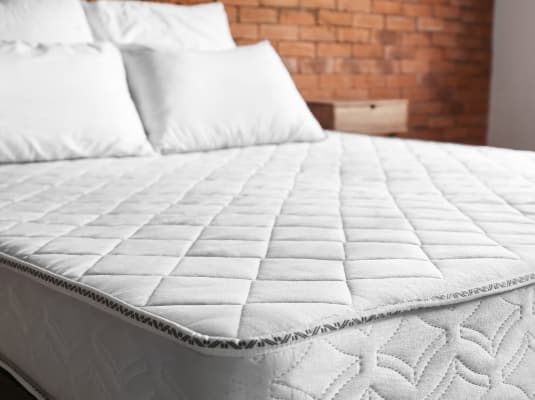
3. Muscle Strain or Previous Injuries:
If you’ve recently strained your back or experienced an injury, you might not feel the pain until you wake up. Activities that involve heavy lifting or sudden movements can strain your back muscles.
4. Poor Sleep Hygiene:
Poor sleep quality can contribute to back pain. If you’re not getting enough restorative sleep, your muscles may not have adequate time to recover. This can lead to stiffness and pain in the morning.
5. Underlying Health Conditions:
Chronic conditions such as mild arthritis can cause ongoing lower back pain that worsens after sleeping.
Effective Strategies for Relieving Lower Back Pain if you woke up with a sore back.
If you wake up with lower back pain or have back pain after waking up, there are ways to help reduce the discomfort.
1. Optimise Your Sleeping Position to avoid waking up with a sore back:
Experiment with different sleeping positions to find one that supports your spine. For many, sleeping on their back with a pillow under the knees can help maintain proper alignment. Side sleepers might benefit from placing a pillow between their knees to reduce strain on the lower back.
2. Evaluate and Adjust Your Mattress and Pillow:
A study found that a medium-firm mattress is best for good sleep and avoiding back pain. It helps with comfort, sleep quality, and back alignment, reducing back pain (Caggiari., et al. 2021).
Assess whether your mattress is providing adequate support. Your pillow should keep your neck aligned with your spine without causing your head to tilt forward or backward.
3. Incorporate Stretching and Strengthening Exercises to avoid waking up with lower back aches:
Gentle stretching and strengthening exercises can help alleviate morning back pain. Incorporate stretches that target the lower back, hips, and legs. Exercises like pelvic tilts, knee-to-chest stretches, and cat-cow stretches can improve flexibility and reduce stiffness.
4. Apply Heat or Cold Therapy:
Heat therapy, such as using a warm compress or heating pad, can help relax tight muscles and ease pain. Cold therapy, such as an ice pack, can reduce inflammation and numb the sore area. Alternate between heat and cold therapies to determine which provides the most effective relief for you.
5. Practice Good Sleep Hygiene:
Maintain a consistent sleep schedule and create a relaxing bedtime routine. Refrain from using screens before bed, and ensure that your bedroom remains cool, dark, and quiet. Good sleep hygiene promotes restorative sleep, which is crucial for muscle recovery and overall health.
6. Stay Active During the Day:
Regular physical activity can strengthen your back muscles and improve your posture. Incorporate low-impact exercises such as walking, swimming, or cycling into your routine. Staying active can also prevent stiffness and reduce the likelihood of waking up with back pain.
7. Use Topical Pain Relief:
Topical treatment options like fisiocrem Solugel offer effective relief for muscle aches and pains. Applying fisiocrem Solugel after waking up with a sore lower back can help reduce inflammation, and ease discomfort. This allows you to start your day with less pain.
Woke up with sore back from mild arthritis pain? Try fisiocrem Joint Ease - Mild Arthritis Relief cream
Woke up with a sore back? When to Seek Professional Help
- Pain that lasts longer than a few weeks
- Pain that changes or worsens over time
- Pain that doesn’t improve with home remedies
Preventive Measures for Long-Term Relief
To avoid waking up with lower back pain in the future, consider implementing these preventive measures:
1. Strengthen Your Core:
A strong core supports your spine and reduces the risk of back pain. Include core-strengthening exercises such as planks and bridges in your fitness routine.
2. Maintain a Healthy Weight:
Excess weight can place additional strain on your back. Aim to maintain a healthy weight through a balanced diet and regular exercise.
3. Use Proper Body Mechanics:
When lifting objects, ensure you bend your knees and maintain a straight back. Avoid twisting your body while lifting.
4. Ensure Ergonomic Workspaces:
If you spend long hours sitting at a desk, ensure your workstation is ergonomically designed to support your back. Use a chair with lumbar support and take regular breaks to stretch and move.
Conclusion
Waking up with lower back pain does not have to dictate the course of your day. By understanding the potential causes and implementing effective treatment options, you can manage and alleviate back pain.
Improving your sleep space and using pain relief creams like fisiocrem can help you wake up feeling better and with less discomfort.
If your back pain persists, don’t hesitate to seek professional advice to address any underlying issues and find long-term relief. Embrace these strategies to wake up feeling more comfortable and ready to take on the day with confidence.
FAQ
Waking up with a sore lower back can be from bad sleep position, a bad mattress or pillow, muscle strain, or health issues.
To alleviate morning back soreness, enhance your sleep quality, evaluate your mattress and pillow, and perform gentle stretches. Topical pain relief products like fisiocrem can also help relieve pain.
Prevent back ache by maintaining good sleep hygiene, staying active, and ensuring your sleep environment is supportive. Strengthening your core and using proper body mechanics can also help prevent future pain.
If your lower back pain worsens or persists despite self-care, consult a healthcare provider to receive appropriate treatment.
Pain in your lower back when you wake up and walk can because of muscle stiffness, poor sleep posture, or misalignment of your spine. Incorporate stretching and strengthening exercises into your routine to improve flexibility and reduce pain.
Yes, topical pain relief products like fisiocrem Solugel can be effective for easing back pain. Apply them after waking up to help reduce discomfort and inflammation.
Address waking up with back ache by adjusting your sleep posture, checking your mattress and pillow, and practicing good sleep hygiene. Incorporate daily stretches and consider using topical pain relief for added comfort.
References
- Caggiari, G., Talesa, G. R., Toro, G., Jannelli, E., Monteleone, G., & Puddu, L. (2021). Journal of Orthopaedics and Traumatology, 22(1).
Introducing fisiocrem sponsored athlete Lauren, a nationally recognised Triathlete based in Queensland.
Lauren has been participating in triathlons for many years and enjoys the diverse challenges they present to both her body and mind. “I’ve found that if you just start, you’ll often complete something you didn’t think you could.”
Lauren’s greatest achievement so far has been completing the 2024 World Triathlon Multisport Championships in Townsville last week. This triathlon competition consisted of a 3km swim, a 115km bike ride, and a 30km run, all under the intense heat and humidity of Townsville. Lauren dominated her age group (Female 25-29) and placed 1st overall with a time of 6:18:18 to claim a podium finish.
Lauren says her biggest supporter is, “My family and friends, whose encouragement and selflessness are crucial to my successful triathlon journey.” On the sports side of things, Lauren’s training buddies, both near and far, motivate and push her to achieve her best. They also remind her of how far she has come and what she still has yet to achieve.
As a visual person, Lauren places her triathlon race suit and an A3-sized poster of her next race in her room. This way, during tough training sessions she can look at these items for motivation. Also, to physically prepare for a race, Lauren remains consistent with her daily training and focuses on the small details that make a difference.
Lauren says, “My favourite running destination would be Cairns or Townsville along the esplanade or a trail run in the bush/mountains. I enjoy the mix of both.”
LAUREN’S TOP RECOVERY TIPS
Lauren’s top recovery tips are, “Doing some form of super-aerobic activity, magnesium baths and resting in my recovery boots.”
Lauren Hume
Celebrating Tradies National Health Month
August is Tradies National Health Month (TNHM). The Australian Physiotherapy Association (APA) started TNHM in 2012. The event focuses on the health and wellness of tradies in Australia.
Australia is currently dealing with a trade shortage and housing crisis, which puts a lot of strain on tradies. At times like these, it’s essential to prioritise their health, as they play a crucial role in our economy. Tradies need to focus on managing pain and preventing injuries to maintain their well-being. By taking care of their health, they can keep working effectively and continue to support our economy.
Understanding Tradies' Health Challenges
Tradies encounter unique health challenges because of the physically demanding nature of their work. Recent surveys highlight the pressing issues:
- Over 90% of tradies experienced work-related injuries or pain last year.
- 76% reported that pain significantly impacts their quality of life.
- 42% described their pain as severe, with some enduring discomfort for months or even years.
- 87% medicate or self-medicate to manage their pain, with 30% resorting to drugs or alcohol.
- 24% are concerned that they will need to retire early because of physical strain.
- Nearly two-thirds who saw a physiotherapist reported significant pain reduction or elimination.
These numbers show that tradies need better ways to manage pain and prevent health issues.
Survey Source: Australian Physiotherapy Association (2024). 2024 Tradies National Health Survey. Understanding how tradies manage pain.
Australian Pain Relief Solutions for Tradies
For tradies battling with pain and discomfort, finding the right solutions is essential. Here’s a look at two standout products that can help make a difference:
Muscle & Back Pain Relief Cream: fisiocrem Solugel
Why fisiocrem Solugel is helpful for tradies:
Tradies frequently face physically demanding tasks that can lead to various forms of muscle pain and back discomfort. From lifting heavy materials to working in awkward positions, these activities put a significant strain on the body. fisiocrem Solugel emerges as a helpful tool for managing such pain and aiding in recovery. This cream helps relieve muscle and back pain from common injuries and strains at work.
Key Benefits of fisiocrem Solugel:
fisiocrem Solugel addresses a range of issues that tradies encounter, including:
- Topical Anti-inflammatory: The gel effectively reduces inflammation, which is crucial for alleviating pain and swelling from injuries. This makes it a valuable option for easing back pain and muscle discomfort.
- Analgesic Effects: It provides effective pain relief by targeting sore and aching muscles. Whether dealing with acute muscle strains or persistent back pain. fisiocrem Solugel helps in managing pain, allowing you to continue working without constant discomfort.
- Enhances Blood Flow: fisiocrem Solugel stimulates blood flow to the skin, promoting faster healing and recovery. This is particularly beneficial for tradies who need to recover quickly from muscle fatigue and strain.
- Muscle Spasms: fisiocrem helps to reduce mild muscle spasms and twitches. Which are common among those who engage in repetitive or strenuous tasks.
- Helps muscles recover faster after exercise and improves performance, allowing tradies to stay productive at work.
How to Use fisiocrem Solugel:
Apply fisiocrem Solugel to the affected area up to three to four times daily. Massage the gel gently into the skin until fully absorbed. fisiocrem Solugel can be applied throughout the day on the job or at home after a long day of work. This application will help to facilitate recovery and manage pain.
The 60g tube of fisiocrem Solugel is convenient to keep in your toolbox or work vehicle. Shop now.
fisiocrem Solugel stands out as a superior choice for tradies dealing with muscle pain, back discomfort, and minor injuries. Its diverse range of benefits make it an invaluable addition to any tradie’s toolkit.
Integrating fisiocrem Solugel into your daily routine, can help you manage your pain and accelerate recovery. This ensures that you keep moving and can be productive in your demanding role.
Discover the Benefits of fisiocrem Joint Ease
Why fisiocrem Joint Ease is helpful for tradies:
For many tradies, joint discomfort and stiffness are frequent challenges, especially given the physically demanding nature of their work. fisiocrem Joint Ease specifically addresses symptoms associated with mild arthritis, mild osteoarthritis, and mild joint pain. It helps support overall joint health, making it a helpful product for tradies.
Key Benefits of fisiocrem Joint Ease:
fisiocrem Joint Ease offers a range of benefits tailored to alleviate joint discomfort and enhance joint function:
- Anti-inflammatory Properties: Reduces joint inflammation and swelling, providing temporary relief from mild joint aches and pains.
- Analgesic Effects: Offers effective pain relief for mild arthritis and temporary joint soreness, allowing for more comfortable movement.
- Supports Tissue Repair: Aids in the repair and regeneration of body tissues around the joints, enhancing overall joint health.
- Improves Joint Mobility: Promotes flexibility and mobility, essential for tradies who rely on their joints for various tasks.
- Alleviates Joint Stiffness: Reduces mild joint stiffness, facilitating easier movement and reducing discomfort during work.
How to Use fisiocrem Joint Ease:
Apply fisiocrem Joint Ease to the affected joint area up to three times a day. Gently massage the cream into the skin until it fully absorbs. Use it during breaks at work or at home to manage joint pain and support joint function throughout the day.
Injury Prevention Tips for Tradies
Preventing injuries is as crucial as managing pain. Here are some practical strategies to help tradies reduce their risk of injury:
Use Proper Technique
Employ correct lifting techniques by bending at the knees, not the waist. This helps avoid back strain and reduces the risk of musculoskeletal injuries.
Take Regular Breaks
Incorporate frequent breaks into your work routine to prevent overuse injuries. Use these breaks to stretch and enhance flexibility, which can help mitigate muscle and joint strain.
Invest in Ergonomic Tools
Use ergonomic tools designed to minimise physical strain. Using well-designed tools can lower the chance of repetitive strain injuries and make work more comfortable.
Perform Warm-Up Exercises
Include warm-up exercises in your daily routine to prepare your muscles and joints for the physical demands of your work. Warm-ups can improve flexibility and reduce the likelihood of injuries.
Stay Hydrated and Eat Well
Proper hydration and a balanced diet are vital for overall health and recovery. Make sure to drink plenty of water and eat a healthy diet to help your body heal and stay energised.
Prioritising Tradies' Health
August is an excellent time to focus on the health of our tradies. We can help essential workers stay healthy and well by managing pain and preventing injuries. Utilising products like fisiocrem Solugel and fisiocrem Joint Ease, alongside practical injury prevention strategies, can help ensure a healthier future for our hardworking tradies.
FAQ
Needing pain relief for back pain?
For relief from back pain, try fisiocrem Solugel. This topical cream helps reduce inflammation and relieve pain through its anti-inflammatory and analgesic properties. Simply apply it to the affected area for effective relief. For ongoing issues, consider consulting a healthcare professional.
How often should tradies take breaks during physically demanding tasks?
Tradies should take breaks every 30 to 60 minutes during physically demanding tasks. Short, frequent breaks help prevent overuse injuries and reduce muscle fatigue. Use these breaks to stretch, move around, and rest, which can help maintain overall comfort and productivity throughout the workday.
Why is hydration important for tradies, and how can it impact their performance?
Proper hydration is crucial for tradies as it helps maintain energy levels, supports muscle function, and prevents fatigue. Dehydration can lead to decreased concentration, muscle cramps, and reduced physical performance.
Wholesale & Practitioners
fisiocrem Australia is devoted to helping you manage your pain, and we have been since 2009. We develop high-quality topical pain relief products that stop pain from interfering with your regular activity.
Are you visiting from New Zealand?
Visit fisiocrem New Zealand here

